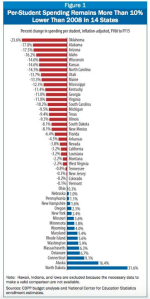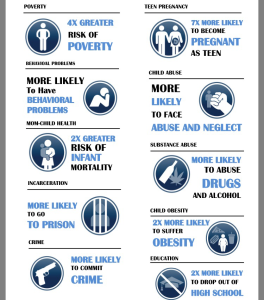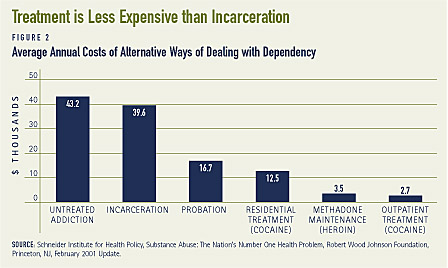A rare occurrence: a politician using his power to HELP America’s incarcerated! New York’s Andrew Cuomo has enacted new policies to help ex-cons re-start their lives and give them a better chance at becoming productive, fulfilled members of society: the “Fair Chance Act”. Read more here.
Tag economic
Out for Good: An Overview of Reentry Efforts in Tompkins County
America spends billions on it’s prison system…but shrinks from funding vital and necessary reentry programs. People often don’t consider the incredible difficulties released inmates have to deal with when reentering society, and the general lack of quality programs and resources to aid in that societal reintegration.
Quality reentry programs are proven to reduce recidivism. Why are they not getting more funding?
One injustice is being remedied: the cost of prison calls
Calls to and from inmates at America’s correctional institutions have long been an exorbitant expense for the loved ones of inmates. These mothers, wives, husbands and children of the incarcerated have had to spend hundreds if not thousands of dollars a year to speak with their loved ones.
I have personally felt the sting of expensive correctional calls: in one month, I spent about $150 on phone calls, getting a 15-minute phone call every other day. For every $20 I deposited into my phone account for the inmate to call me, $6.95 of that was eaten up immediately in “administrative fees”.
This month, however, the FCC did right: it capped the cost of correctional phone calls. Read more here.
Budget Trends Show That the U.S. Values Prisoners Over Children
The American prison system is in dire need of a fundamental transformation. This system built on mass incarceration is costly and ineffective.
According to the American Civil Liberties Union, about 25% of the world’s prisoners are incarcerated in America, even though it hosts only 5% of the world’s population. Harsh sentencing practices such as long minimum sentences and harsh penalties for minor drug possession have filled up our prisons to populations that rise above those of Russia and China.
The US spends far more money imprisoning its citizens than educating them. The following gif compares the costs of educating a child vs the costs of housing a prisoner.
[click to enlarge]
Housing a prisoner costs roughly five times as much as educating a student in California, Washington and Utah. In dozens of other states, the cost of imprisoning someone is far more than double or triple the cost of educating a student.
If state budget trends reflect policy priorities, then the U.S. currently values prisoners over children. A report released by the Center on Budget and Policy Priorities shows that the growth of state spending on prisons has far outpaced the growth of spending on education in recent years. “After adjusting for inflation, state general fund spending on prison-related expenses increased over 140 percent between 1986 and 2013. During the same period, state spending on K-12 education increased only 69 percent, while higher education saw an increase of less than six percent.”
In fact, since 2008, spending on education has declined in a majority of states.
In an interview with the Huffington Post, Michael Mitchell, a co-author of the report and a policy analyst with the Center on Budget and Policy Priorities, suggested that education spending could actually help lower incarceration rates. “When you look at prisoners, people who get sent to prison and their educational levels are typically much lower than individuals who are not sent to prison,” said Mitchell. “Being a high school dropout dramatically increases your likelihood of being sent to prison.” He added that those dollars spent locking people could’ve been dollars spent to provide pre-k slots or financial aid.
The report suggests that states’ spending practices are ultimately harming their economies, while not making the states especially safer. The authors of the report conclude that if “states were still spending the same amount on corrections as they did in the mid-1980s, adjusted for inflation, they would have about $28 billion more available each year for education and other productive investments.”
The U.S. incarceration system is basically an inversion of its education system. Although the public school system in this country is inherently flawed, children emerge with knowledge and skills that allow them to contribute more effectively to society. On the other hand, the harsh prison system systematically fails to rehabilitate its inmates. Nearly two-thirds of the inmates released every year return to prison. Those that manage to remain outside of it are often worse off than before they were incarcerated, as they face discrimination in housing, employment and political participation.
If more money were spent on sustaining an education system that met the needs of all of its students, maybe so much money wouldn’t be spent on putting people behind bars.
“The types of investments to help people out of poverty and break that school-to-prison pipeline are investments in early education, helping youth stay in school and getting them on college campuses,” said Mitchell.
The Incarcerated Parents Crisis in America
According to the U.S. Census Bureau, one out of three American children live without their biological dad in the home. Consequently, there is a “father factor” in nearly all of the societal issues facing America today. We must realize there is a father absence crisis in America that is due to the injustice of drug related sentencing.
Youths in father-absent households still have significantly higher odds of incarceration than those in mother-father families. Youths who never had a father in the household experienced the highest odds! A 2002 Department of Justice survey of 7,000 inmates revealed that 39% of jail inmates lived in mother-only households. Approximately 46% of jail inmates in 2002 had a previously incarcerated family member. One-fifth experienced a father in prison or jail. What Americans needs to acknowledge is that “our” children are the future; and how we raise them is going to play a key role in the way our society will progress. Children of incarcerated parents are more likely to drop out of school, join in delinquency, and subsequently be incarcerated themselves.
- Official U.S. data shows that 63 percent of youth suicides (5 times the average), 70 percent of youths in state-operated institutions (9 times the average) and 85 percent of children with behavioral disorders (20 times the average) are from fatherless homes.
- Studies on parent-child relationships and child wellbeing show that father love is an important factor in predicting the social, emotional, and cognitive development and functioning of children and young adults.
- Daughters of single parents without a Father involved are 53% more likely to marry as teenagers, 711% more likely to have children as teenagers, 164% more likely to have a pre-marital birth and 92% more likely to get divorced themselves.
Our legislative system is creating generational problems for our society and the future of our nation. These children who are being raised with a parent incarcerated are not as stable as those who live in a two-parent household. These children need stability and need to have a healthy relationship with their parents, especially those incarcerated.
Knowing this we need to develop an alternative punishment for non-violent drug offenses. Such as reducing sentences for incarcerated people who participate in rehabilitation programs, expanding sealing and expungement criteria for some juvinelle offenses, and providing the possibility of parole for some offenses committed while a juvinelle.
Our legislation needs to be stronger and it should eliminate unfair mandatory minimums altogether. Our legislation should do more to eliminate punitive incarceration for children and opt instead for community-based rehabilitation. Our legislation is barely scratching the surface of what needs to be done, and there is much more to do.
Sources:
Dollars & Sense: Rehabilitation Over Incarceration
Numbers don’t lie, as the old adage goes. So let’s take a look at some pertinent ones:
- 5 million people were arrested in 2013 for non-violent drug charges
- Close to 25% of those incarcerated (in all types of institutions) were non-violent drug offenders
- U.S. taxpayers spend approximately $17.5 billion a year incarcerating non-violent drug offenders (25% of the $70 billion incarceration bill the U.S. pays annually)
$17.5 billion spent on warehousing non-violent drug offenders- almost all of them drug addicts who would benefit from treatment and rehabilitation. That’s roughly $30-40,000 per inmate per year. With the average sentence length of a nonviolent drug conviction running 6 years, that’s $180,000. A drug addiction left untreated will result in continued drug use and arrests-which is why 63% of nonviolent drug offenders recidivate within 3 years. Recidivism costs the U.S. taxpayer more money re- incarcerating the same individual. The almost complete lack of any drug treatment available to inmates is a large reason for the astronomical recidivism rate.
Rehabilitation programs, which are the only realistic way to help and keep a drug addict from re-offending, cost drastically less than incarceration. The National Institute on Drug Abuse states that, “Treatment can cut drug use in half, decrease criminal activity, and reduce arrests”. Thirty day inpatient rehab programs can cost as little as $2,000, while outpatient programs are even lower cost (as little as $3,000 a year). Placing non-violent drug offenders in an inpatient or outpatient treatment program, combined with probation, is much cheaper to the taxpayer than incarceration. Economically, everyone benefits: less initial cost to the taxpayer, long term the offender is much less likely to re-offend, saving future incarceration costs, and the offender themselves can become a productive job-holding member of society.
Rehabilitating non-violent drug offenders is not just bleeding-heart, save the whales policy. It makes hard numerical sense. Completely objectively, would you rather spend $10,000 or $180,000? I would much rather spend $10,000. When a non-violent, drug addict receives proper treatment and probation, that individual is much more likely to:
- stop using drugs and spending thousands on their addiction
- less likely to reoffend
- get a job and pay taxes
An untreated drug addict will just continue to reoffend, costing the taxpayer more money indefinitely.
Sources: drugabuse.gov, drugwarfacts.org, http://www.cepr.net








